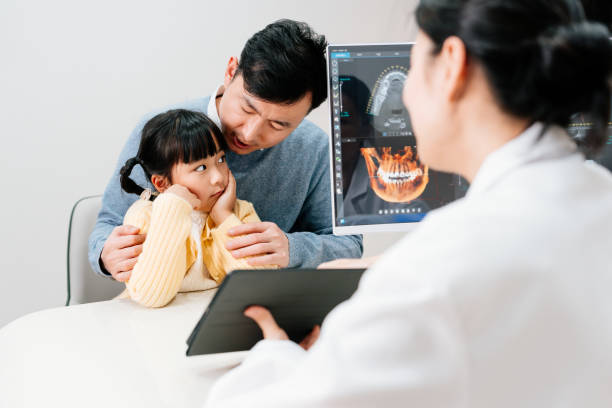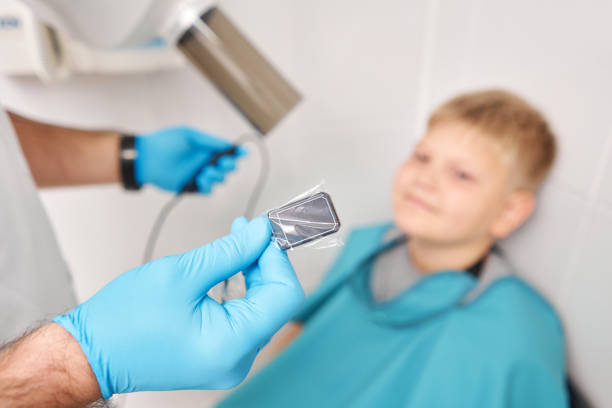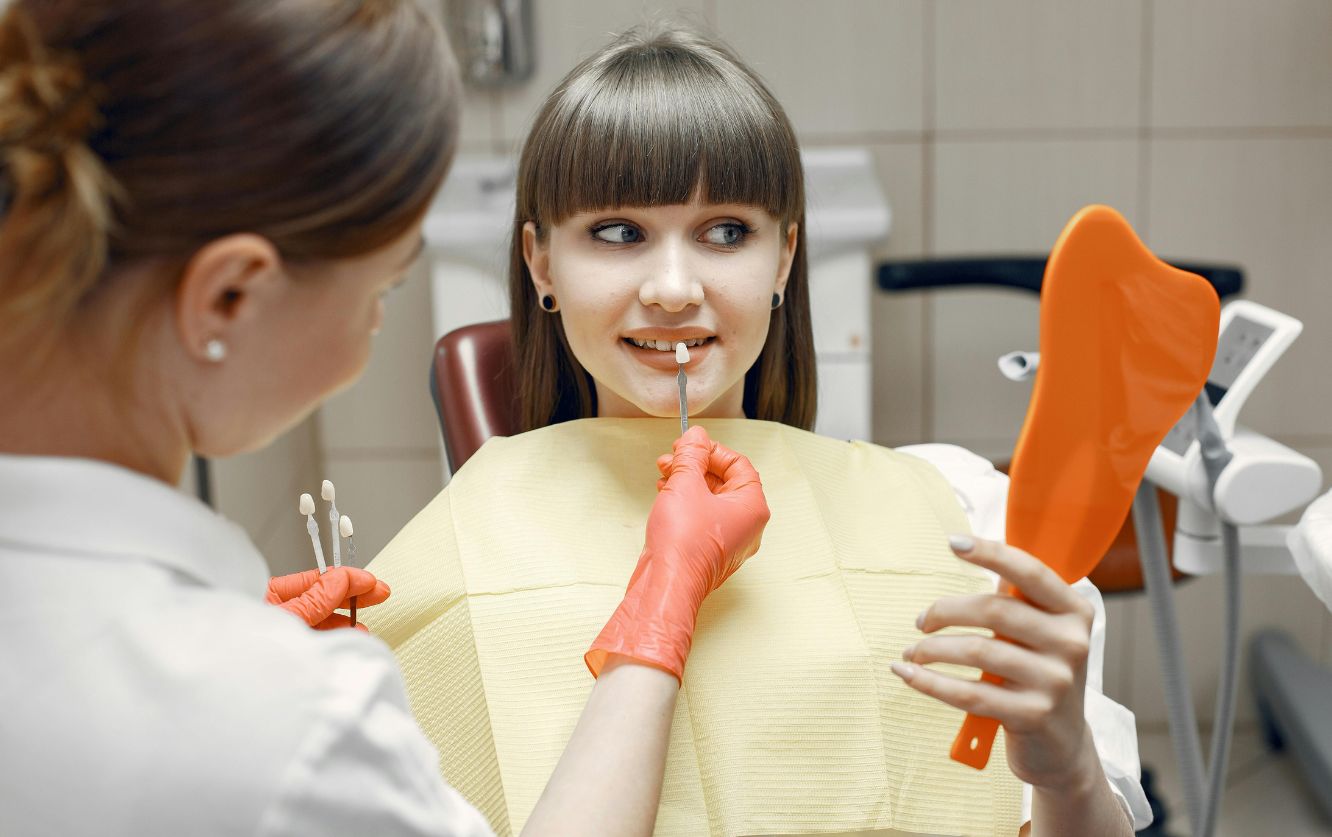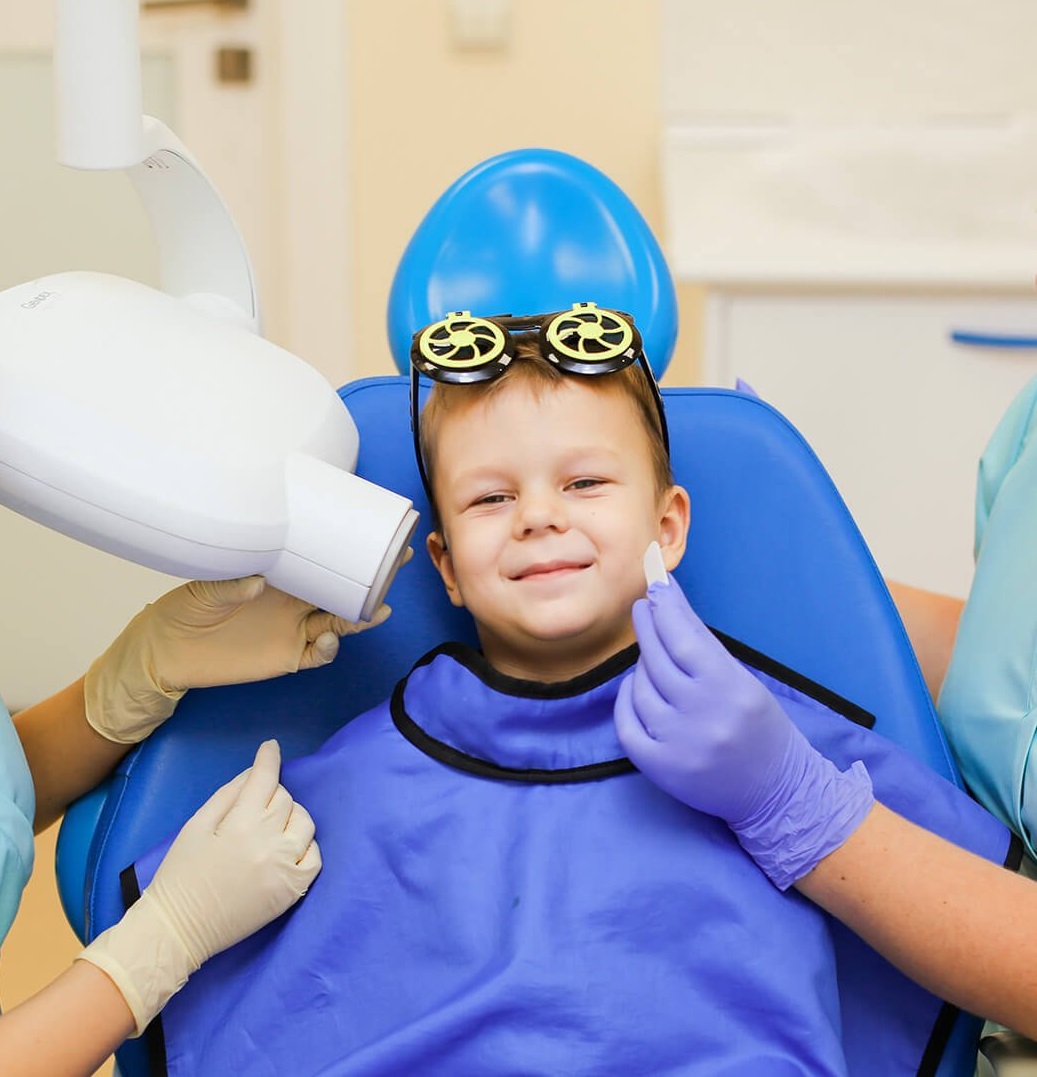

Expert dental tips, news, and smile advice
Are Dental X-Rays Safe for Kids? What Parents Should Really Know
August 8, 2025
Crossroads Pediatric Dentistry
Maya, age five, climbs into the chair clutching her stuffed toy. Her dad asks, “Do we have to do x-rays today?” Our short answer: modern digital pediatric x-rays are very low dose, and we only take them when they’ll change care—not “just in case.” Below, we explain what “low” really means, how we decide, how often kids need them, and what your options are if you’d prefer to wait.

The Short, Straight Answer You Came For
Yes—dental x-rays are considered safe for children when modern digital systems are used and best practices are followed. At our office, we take x-rays only when they’re likely to change care, we shield with a lead apron and thyroid collar, and we use child-sized exposure settings. That means your child’s radiation exposure is extremely low and kept as low as reasonably achievable.
If you remember nothing else, remember this: low dose + limited frequency + a clear clinical reason is our standard.
Why Kids Sometimes Need Dental X-Rays (Even When Everything “Looks Fine”)
Teeth are small, but they hide big stories. Cavities often start between the back teeth where toothbrush bristles and even eagle-eyed dentists can’t see. The roots of baby teeth sit close to the developing adult teeth; we watch those spaces carefully to protect what’s coming next. X-rays help us:
- Peek between teeth to catch early decay while it’s still reversible or easily managed.
- Monitor growth and eruption paths, making sure adult teeth are on schedule and have enough room.
- Check for infection at the root tips if a tooth has been hurting after a fall or a deep cavity.
- Evaluate trauma when there’s a chipped front tooth or a sports injury. In urgent cases, x-rays can be the difference between saving and losing a tooth.
We never take images “because it’s time.” We take them because a specific question needs an answer.
Want to see how digital imaging fits into preventive care? Explore our overview of Digital X-Rays and our guide to Early Dental Care.
Digital vs. Film: What “Low Radiation” Really Means for Kids

If you grew up with film x-rays—those tiny cardboard tabs and the chemical developing—digital is a different world. Digital sensors are more sensitive, so they need far less exposure to create a crisp image. Pair that with selective imaging (we don’t scan the whole mouth when two targeted images will do) and protection (lead apron + thyroid collar), and the dose remains very small.
Here’s a way to picture it: daily life exposes all of us to background radiation from the sun, the ground, even certain foods. A set of bitewing x-rays with modern equipment is in the same ballpark as what you’d naturally encounter over a short, ordinary period of time. It’s not zero, and we never pretend it is—but it’s tiny compared to medical imaging like CT scans, and it’s orders of magnitude below levels associated with harm.
We take safety personally. Our equipment is calibrated for children, our team follows ALARA principles (as low as reasonably achievable), and we routinely review whether images are still necessary at each visit.
How Often Do Kids Need Dental X-Rays?
This is the question parents Google most: “How often do kids need dental x-rays?” The honest answer is it depends on your child’s cavity risk and dental history.
- Low-risk kids (few or no cavities, healthy gums, excellent home care): we may space bitewing x-rays every 12–24 months, sometimes longer.
- Higher-risk kids (cavities in the past year, visible plaque, snacking frequency, medical factors, enamel issues): we may recommend every 6–12 months until risk drops.
- Growth and eruption checks (like seeing whether adult molars are on the way or if a canine is drifting off course): these are scheduled around key milestones, not every visit.
The schedule isn’t a rule. It’s a conversation, and it can change as your child’s risk changes. If you want to hold off and your child isn’t in pain, we’ll talk through pros, cons, and a plan to re-evaluate.
Big Care for Little Smiles
Ready to Transform Your Smile?
Ready for a happier dental visit for your kids? From cleanings to same-day emergencies, we keep kids comfortable and parents informed every step of the way.
Discover the best solution for your smile at Fortson Dentistry. Schedule your appointment now and let our expert team guide you to a confident, healthy smile.

A Parent’s Story: From “No X-Rays” to “I’m Glad We Did”
Back to Maya. Her dad initially declined x-rays. No problem—we did a thorough exam, reviewed brushing habits, and scheduled a check in six months. At that visit, Maya still wasn’t complaining, but we noticed subtle shadowing on the chewing surfaces. After a calm conversation, her dad agreed to two bitewing images. They revealed early decay beginning between the molars—far too small to see by sight alone. Because we found it early, we treated it conservatively, coached the family on snack timing, and avoided a more invasive filling later.
That’s the point: x-rays don’t exist to create treatment; they exist to prevent bigger treatment.
What Happens if We Skip X-Rays?
If you prefer to wait, we’ll respect that and document your decision. We’ll also adjust care: shorter recall intervals, more targeted visual exams, and stronger home-care coaching. But here’s the candid truth we share with every family: without x-rays, we’re more likely to miss early problems—especially between teeth and under existing fillings or crowns.
If cost is a concern, let us know. We can often prioritize just the two images that answer the most urgent question, rather than a full set. And of course, you can ask for a copy of images for your records or to share with specialists.
For a sense of what imaging looks like during your child’s first appointment, visit your child’s first visit.
When X-Rays Are Most Helpful (Real-World Scenarios)
- Between-teeth mystery: Your child brushes like a champ, but tiny cavities are brewing where toothbrushes can’t reach. Two quick bitewings can catch them while they’re still small.
- Toothache after a tumble: The front tooth looks fine, but a periapical x-ray checks the root tip for trauma or infection—crucial for deciding whether the tooth needs special care.
- Timing those six-year molars: Panoramic or selective x-rays help us confirm the teeth are erupting properly and whether there’s enough room.
- Monitoring a deep filling: If a baby molar had a large cavity last visit, follow-up imaging ensures the nerve area is quiet and the tooth is healing as expected.
If a dental injury happens on the playground or field, don’t wait—head to our dental emergencies page for immediate steps, then call us.
Safety Protocols You Can Expect at Every Visit

While we keep the tone kid-friendly, our safety checklist is all business:
- Lead apron and thyroid collar for every child, every image.
- Child-specific exposure settings (not adult defaults dialed down).
- Selective imaging—we take the fewest images needed to answer the clinical question.
- Sensor comfort strategies—topical numbing gel or size adjustments when a strong gag reflex shows up.
- Transparent dialogue—we’ll show you the specific reason each image is recommended before we proceed.
Curious about our technology? Here’s more on our Digital X-Rays.
What About Radiation Accumulation Over Time?
It’s wise to think long-term. Cumulative exposure matters, which is why our philosophy pairs low-dose technology with smart timing. We also look at the big picture: if a small, targeted x-ray prevents a deep cavity from progressing, it can spare your child future procedures (and in rare cases, medical imaging after infections or facial swelling) that carry higher exposure and bigger risks than a quick dental image.
We’ll also happily coordinate with any specialists to avoid duplicate imaging. If you’re moving or changing providers, ask us to forward your child’s images to the new office.
How We Decide—Together

When x-rays are recommended, we’ll say exactly why, what type, and how the result could change care. We’ll outline alternatives and the pros/cons of waiting. Some families prefer a “one-and-done” approach: capture the key images today and then stretch the interval. Others choose to stage images over two visits. Either way, we’ll tailor the plan to your family’s comfort level and your child’s risk.
If you’re planning your first appointment, our team created a step-by-step walkthrough here: your child’s first visit. When you’re ready, you can book online via our simple Appointment Request form.
FAQ: Parents’ Most-Asked Questions About Pediatric X-Rays
1) Are dental x-rays safe for kids?
At our practice in Dallas, we use digital sensors that require far less exposure than traditional film, plus a lead apron and thyroid collar every time. Safety isn’t a talking point—it’s a protocol. The dose is very low, and we take images only when they’re likely to change care. If x-rays aren’t needed, we won’t recommend them.
2) How often will my child actually need x-rays?
Patients at CrossRoads Pediatric Dentistry usually ask this at the first visit. We base timing on cavity risk, growth stage, and past history—not a calendar. Low-risk kids may go 12–24 months between bitewings; higher-risk kids may benefit from 6–12-month intervals until risk drops. We’ll reassess at every checkup and adjust the plan together.
3) Can we skip x-rays and just “watch it”?
We often recommend a watchful waiting approach when risk is low and your child is comfortable. Without x-rays, we’ll shorten recall intervals and focus on prevention so nothing slips by. If symptoms arise—pain, sensitivity, a history of deep cavities—we’ll explain why a small, targeted image could prevent a larger issue later.
4) What if my child has a strong gag reflex or is anxious?
At our practice in Dallas, GA, we take an extra minute to get comfortable: small sensors, gentle positioning, and a few coach-able tricks (breathing through the nose, lifting a foot, topical gel to reduce sensitivity). Many kids surprise themselves and handle it easily. If anxiety is significant, we can discuss timing, desensitization, or, when appropriate, options like Early Dental Care visits that build confidence slowly.
5) Will insurance cover my child’s dental x-rays?
Coverage varies by plan and by interval. While we can help you understand your benefits, your plan ultimately determines coverage frequency. If you’re unsure, bring your card and questions—we’ll look it up together and prioritize the most useful images first. For billing transparency, we’re always happy to provide codes and a written estimate before we begin.
A Final Word to Parents We Haven’t Met Yet
You shouldn’t have to choose between caution and good care. With today’s digital technology, you can have both: very low exposure and very high clarity. When x-rays are necessary, they’re quick, comfortable, and focused. When they aren’t, we wait. That’s the balance we’d want for our own kids—and the balance we offer yours.
If you’re ready for a thoughtful, individualized plan, we’d love to help. Start with a meet-and-greet through our Appointment Request form, read about what to expect at your child’s first visit, or dive deeper into our approach to Digital X-Rays.
Contact Us
Address
8879 Dallas Acworth Hwy, Dallas, GA 30132, USA
Phone Number
+1 (770) 738-5437Business Hours
Mon - Thu
8 AM - 5 PM
8 AM - 5 PM
Fri-Sun
Closed
Closed
